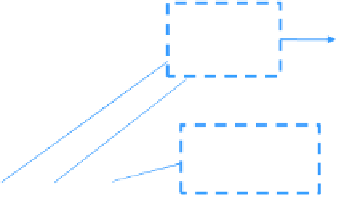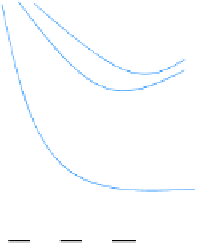Information Technology Reference
In-Depth Information
stereoscopic camera. Then, we handle a scheme to render a dynamic 3D scene repre-
sented by video-plus-depth using meshes, called hierarchical decomposition of depth
images [13]. In the hierarchical decomposition, we create three disjoint layers from a
depth image according to the existence of edge information: regular mesh, boundary,
and feature point layers. Finally, we present a method to generate streamable 3D video
contents based on video-plus-depth in the MPEG-4 multimedia framework. Since
traditional multimedia frameworks merely deal with efficient coding issues and syn-
chronization problems between video and audio, we pay attention to the MPEG-4 mul-
timedia framework that supports streaming functionality for various media objects and
provides flexible interactivity.
The rest of this chapter is organized as follows. Section 2 introduces a hybrid
camera system and a depth estimation method using the hybrid camera system.
Section 3 describes a hierarchical decomposition method to render a dynamic 3D
scene with video-plus-depth. Section 4 presents MPEG-4-based 3D video contents
generation. The performance of generated video-plus-depth and its 3D video con-
tents is shown in Section 5. The chapter is concluded in Section 6.
2 Video-Plus-Depth Generation
2.1 Hybrid Camera System
We introduce a hybrid camera system combining a number of video cameras and a
depth camera. The video camera set can be single, stereoscopic, or multiview
cameras. In this work, we set up a hybrid camera system composed of a HD
stereoscopic camera and a SD depth camera, Z-Cam. Figure 1 shows the hybrid
Sync. Generator
Stereo Video Camera
Right Image
Left Image
Depth Image
Color Image
PC 2
PC 3
PC 1
Depth Camera
Fig. 1
Depth camera-based hybrid camera system













